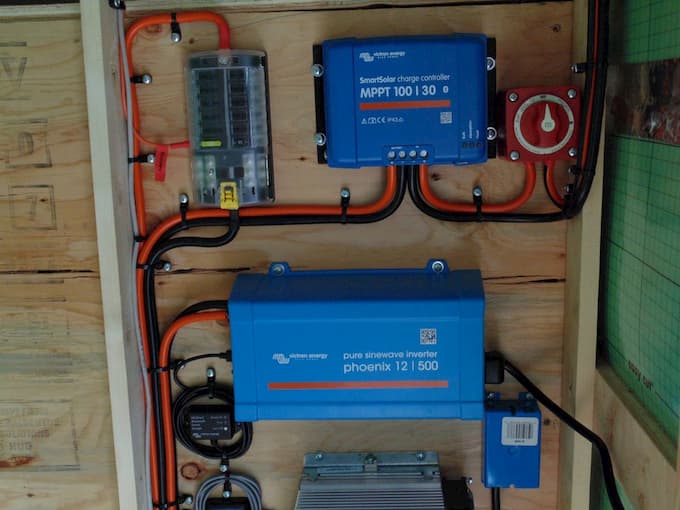Off-Grid Solar System: What Are the Components?
Want to cut down your power bills and protect yourself in cases of blackouts? The solution is simple: invest in an off-grid solar system. Besides these benefits I already mentioned, it’s also the answer to reducing your carbon footprint and helping the environment. It’s thanks to these advantages, as well as the growing trend of sustainability people are becoming interested in worldwide, that the prices of solar panels have started becoming more and more affordable.
This isn’t to be said of the off-grid solar system which can still break your bank to set up. Instead of giving up on the idea of living in an alternative and simpler way off-grid by using up clean energy for your household, why not take the time to get to know more of the system?
All you have to do is become aware of your energy needs as the first step, and then understand the basics, i.e. the basic components that make up an off-grid solar system to understand how you can make cost-efficient purchases. There are four bits you’d have to choose: the solar panels, solar inverters essential for converting DC to AC, batteries, and charge controllers.
The Energy Needs
Calculating your energy needs is necessary because it would help you out when the time comes to choose the solar system components, like the panels. You can get to the exact amount of power consumption by calculating the watt hours.
The Solar Panel
These are the parts that receive sunlight and convert it into electricity, specifically DC (direct current). Since there are various options, the basic choice comes down to monocrystalline and polycrystalline, the difference being monocrystalline are more efficient solar panels than the polycrystalline and somewhat pricier but this pays off in the long run.
After you decide from the two, you might be wondering on the number of panels that would be most suitable for your home. You can make up your mind by taking the area where you live into account, along with the solar panel size as well as output efficiency.
The location is important so you can calculate how much sunlight it is you get during the day and throughout the year – the less sunlight, the more panels you’d require. Once you know your watt hour, you can divide the average hour wattage requirement with the number of daily peak sunlight to get the amount of energy you require from the panels. In terms of size, your choice is based on how much roof space you have – with smaller roofs, you’d have to go for smaller designs but with bigger output efficiency.
The Solar Inverter
As one of the most important components of the system, the solar inverter is created to convert the DC of the solar panels into 240V AC that’s needed for use with the appliances. The latest designs of inverters include integrated battery management systems, as in the case with the inverter-charger which basically has the same function of the regular inverter, but it also has the capability to connect to a generator or the grid. This is useful for converting the AC into battery voltage that would later be stored in the battery bank.
When buying solar inverters, you can choose from three types: square, modified sine and pure sine wave. Though the first one seems appealing with the price, it may not be the best option since it’s not suitable with all the devices you’re using, whereas the second one doesn’t work with fridges, microwaves and the like. As for the third, it’s the most efficient of the three and works with most appliances.
If you want to make the most of the system, it’s advisable to invest in high quality solar panel inverter that has more power than the load you’ve calculated, and depending on where you live you might also want to pay attention to the convection cooling system; in some countries where the climate is warmer and harsher the inverter might fail on you if the quality is low.
The Battery
When you decide to implement an off-grid system for your home, it means you need to store the energy you don’t use in which case you ought to incorporate deep-cycle batteries. What’s specific about them is the fact they are designed for deep slow discharge, so while they charge throughout the day, they slowly discharge afterwards without being damaged. If your home isn’t high power demand, you could do with a 12/24V system, as opposed to the 48V for bigger demands.
The Charge Controller
Also known as a charge regulator, this solar power system part is in charge of regulating the voltage as well as the current from the solar panels on their way to the batteries, as the name implies. In other words, it’s designed to prevent overcharging and putting strain on the batteries.
Your choice comes down to three types of controllers: on/off, PWM, and MPPT. Though cheapest, the first is also the less efficient, as opposed to the more efficient yet still affordable PWM. As you might guess, the last one is the most efficient and the priciest of the three.





really appreciate you for this informative blog and i found some helpful information. Keep sharing. 10 kw solar system price in Pakistan
ReplyDelete